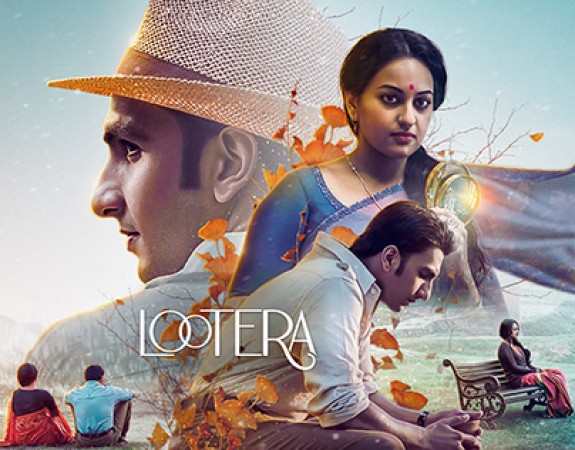
Indian cinema has a long history of turning compelling literary works into movies that connect with viewers on both an artistic and an emotional level. Vikramaditya Motwane's "Lootera," one such movie that has enthralled viewers with its complexity and storytelling skill, is one example. Although the movie is frequently referred to as an adaptation of O. Henry's short story "The Last Leaf," there is a lot more going on. "Lootera" is a complex narrative that weaves together two separate stories, with the first half acting as an inadvertent commentary on the colonial-era Zamindari System in West Bengal and the second half taking inspiration from O. Henry's famous story.
Understanding the historical context in which "Lootera" is set is crucial for appreciating the nuanced storytelling. During the British colonial era, the Zamindari System was an established feudal land tenure system in India. Landlords in this system, referred to as zamindars, controlled the peasants who worked the soil and held vast tracts of land.
A stark divide existed between the wealthy zamindars and the poor peasants under the Zamindari System, which was characterized by oppression, exploitation, and these characteristics. As zamindars profited while peasants struggled to make ends meet, the system was by its very nature unfair. "Lootera" develops its story against this sociopolitical backdrop.
In its first half, "Lootera" explores the Zamindari System in great detail while providing an allegorical depiction of the oppression and suffering endured by the peasants. Varun Shrivastav, played by Ranveer Singh, the movie's main character, poses as an archaeologist and accepts an invitation to excavate the property owned by wealthy zamindar Zamindar Pathak, played by Barun Chanda.
As the plot develops, we see the stark contrast between the zamindar's mansion's opulence and the villagers' destitution. The oppressed peasants who are made to toil endlessly in the zamindar's fields are the ones who build his opulent lifestyle with their sweat and labor. The stark social disparities that characterized the Zamindari System are reflected in this division between the zamindar and the peasants.
Through its use of visual storytelling, the movie subtly criticizes the zamindar's exploitation of the villagers. The struggles of the villagers, their reliance on the zamindar, and their fervent desire for change are made clear to the audience. Varun's intrusion into the zamindar's world stands for the possibility of change and the hope for justice within a firmly established and unfair system.
The director of "Lootera," Vikramaditya Motwane, uses symbolism and metaphors to illustrate the plight of the peasants and the destructive effects of the Zamindari System throughout the first half of the film. Varun is a guest at a run-down mansion that stands in for the waning aristocracy. The once-grand building is now a dilapidated remnant of an earlier time, reflecting the waning influence of the zamindars.
As metaphors for both the preservation of history and the discovery of untold truths, art and archaeology also use certain themes. Varun's love of archaeology stands for the desire to uncover the hidden injustices of the past and bring them to light for restitution.
Varun and Pakhi, the zamindar's daughter (played by Sonakshi Sinha), begin to develop a romantic relationship as the second half of "Lootera" takes a dramatic turn away from the Zamindari System. The adaptation of O. Henry's "The Last Leaf" for the screenplay takes place at this point in the story.
Similar to the plot of O. Henry's "The Last Leaf," in which a leaf painted on a wall serves as a symbol of hope and sustenance, Varun sets out on a desperate mission to save Pakhi as she fights a life-threatening illness.
As Varun's actions are motivated by a sincere desire to make amends for the injustices he saw in the first half of the film, "Lootera"'s second half explores themes of love, sacrifice, and redemption. Here, the movie seamlessly blends the two seemingly unrelated stories to form a unified, emotionally compelling whole.
"Lootera" is a masterpiece of cinema that goes above and beyond the limitations of being merely an adaptation. It is influenced by O. Henry's "The Last Leaf," but it also skillfully incorporates this literary work into a more substantial story that serves as a subversive commentary on the Zamindari System in colonial-era West Bengal.
A notable piece of Indian cinema, the movie stands out for its complex storytelling, depth of symbolism, and outstanding performances by the cast. The film "Lootera" encourages viewers to consider historical injustices from the past, the enduring power of love and redemption, and the possibility of change within even the most firmly established oppressive systems.
The director of "Lootera," Vikramaditya Motwane, expertly combines two distinct narratives to create a movie that challenges its audience to delve into the depths of human emotion and societal change while also entertaining them. Without a doubt, it is a masterpiece of the silver screen that never fails to leave a lasting impression on those who are fortunate enough to witness its masterful storytelling.
Shreyas Talpade's Journey in Bollywood: Balancing Fame, Friendship, and Foes
Abhay Deol's Best: The Top 10 Movies That Set Him Apart
JAWAN Box Office Day-1 Collection: Shah Rukh Khan's Action Thriller Surpasses PATHHAN Earns Rs.75 Cr